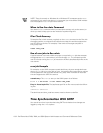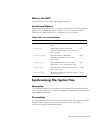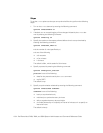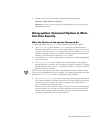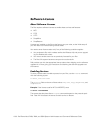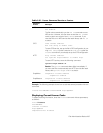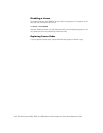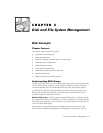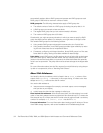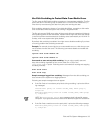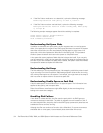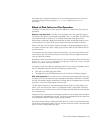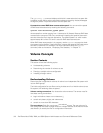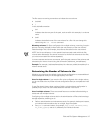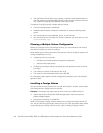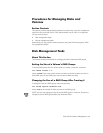
3-2 Dell PowerVault 720N, 740N, and 760N System Administrator and Command Reference Guide
automatically assigns disks to RAID groups and creates new RAID groups as each
RAID group is filled with its maximum number of disks.
RAID group size: The following characteristics apply to RAID group size:
The default number of disks in a RAID group (including the parity disk) is 14.
A RAID group must contain at least two disks.
The largest RAID group size you can create
manually
is 28 disks.
The maximum RAID group size is 52 disks.
Occasionally, you might encounter situations in which you want to specify a RAID
group size other than the default. For example, you might want to configure a filer
with smaller RAID groups for the following reasons:
Using smaller RAID groups reduces disk reconstruction time if a disk fails.
Using smaller (therefore, more) RAID groups provides higher reliability by reduc-
ing the risk of data loss due to multiple-disk failure.
Conversely, configuring with larger (therefore, fewer) RAID groups in a filer uses
fewer disks for parity, leaving more disks available for data storage.
Parity disks: In each RAID group, the filer assigns the role of parity disk to the largest
disk in the RAID group. After a data disk failure, the filer uses the parity disk in con-
junction with the other data disks to reconstruct the failed disks data and optionally
write it to a hot spare disk. The parity disk must be at least as large as the largest data
disk.
For more information about how the filer recovers from disk failures by using the par-
ity disk or hot spare disk, refer to Handling Disk Failures.
$ERXW'LVN$GGUHVVHV
You identify a disk by its address, which is listed in the
HA.Disk_ID
column of the
output of the
sysconfig -r
command. In this output listing,
HA
refers to the host
adapter and
Disk_ID
refers to the disk ID number.
You use the disk address to
interpret screen messages (for example, command output or error messages)
that you see on your display
quickly locate the disk that the message is referring to
Fibre channel disk addresses: With fibre channel disks, the disk address is a combi-
nation of the disks adapter number and the disks fibre channel loop ID. To create the
fibre channel loop ID, multiply the shelf ID switch value by eight and add it to the bay
number. For example,
ha 8
,
shelf 1, disk 2
has disk ID
8.10
.
For more information: For more information about locating specific drives on Power-
Vault 700N storage systems, refer to the
Installation and Troubleshooting Guide
.



